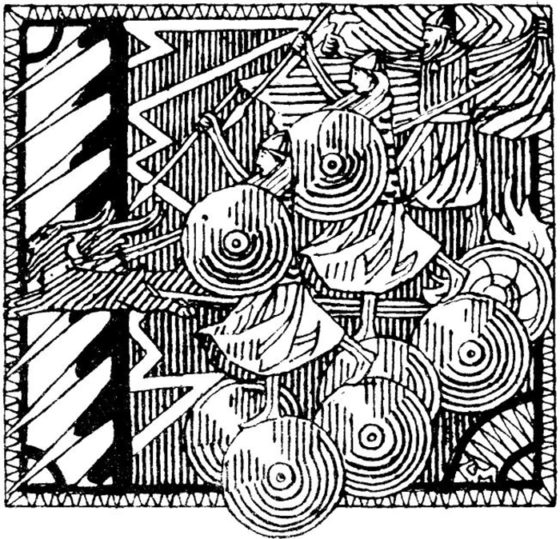
“The plane’s innovative airframe featured two slightly elongated P-51 fuselages to offer additional fuel capacity.”
WORLD WAR TWO ended before one of the most improbable piston-engine fighter planes ever designed had the chance to see action — the North American P-82 Twin Mustang.
The plane’s innovative airframe featured two slightly elongated P-51 fuselages connected by a shared centre wing.
Here’s the story of this remarkable fighter plane.
Long-Legged Beauty
Designed in 1943 as an extremely long-range, high-altitude bomber escort, the P-82 could fly distances of more than 2,300 miles (3,600 km) — even farther with drop tanks. By comparison, conventional P-51 Mustangs were limited to roughly 1,600 miles (2,700 km). The new plane’s astonishingly long legs, not to mention its remarkable 40,000-foot service ceiling, would have enabled it protect American B-29 Stratofortresses on deep strike missions over Japan.
Seeing Double
Initially, Twin Mustangs carried a pair of pilots — one for each cockpit. This allowed crews to alternate control of the aircraft on marathon endurance flights. In later models, the port fuselage was exclusively for a pilot, while starboard side was outfitted for a dedicated radar operator.

Pure Fighter, Solid Bomber
Despite its ponderous size and weight (the plane was as heavy as two conventional 12,000-lb. P-51s), the Twin Mustang was a fast and nimble dogfighter. Its twin counter-rotating Rolls Royce Merlin Engines (which after the war were later switched out for lower-powered U.S. made Allison V-1710-100s) provided the P-82 with a top speed of nearly 500 mph (750 km/h). Six .50 caliber machine guns mounted in a single bank on the centre wing gave the Twin Mustang a lethal kick. Hardpoints on the outer wings allowed each plane to carry 25 air-to-ground rockets or up to 4,000 pounds of bombs – roughly the same payload as a World War Two medium bomber.

Cold Warrior
World War Two ended by the time the Twin Mustang was ready for production. And with the post-war draw-down of the U.S. military in the offing, the P-82 seemed destined for mothballs. However, escalating tensions between Washington and Moscow changed all that — America needed newer warplanes, and fast. With jet-powered aircraft still under development in the opening year of the Cold War, the Pentagon recognized the Twin Mustang as a useful stopgap that could hold the line until more advanced fighter technology were brought into action. In 1947, the newly established U.S. Air Force bought 250, making the plane the last USAF piston-engine fighter ordered into production.

Homeland Security
The first operational Twin Mustangs, re-designated as the F-82, entered service with Strategic Air Command (SAC) fighter wings in 1948. The Air Force envisioned the new aircraft serving as a fighter escort for any future long-range bomber strikes against the Soviet Union.
Radar equipped variants operating with the Air Defense Command patrolled both U.S. coasts safeguarding the continent from the threat posed by new Russian bombers like the Tu-4 Bull – Moscow’s reverse-engineered copy of the Boing B-29.
The Twin Mustang was ideal in both roles, in no small part from its astounding operational range. This was demonstrated by the Air Force in 1947 when a single F-82 rigged with fuel pods flew non-stop from Hawaii to New York — a distance of more than 5,000 miles. The Feb. 27 voyage, which took just over 14 hours to complete, still holds the world record for the longest non-stop distance travelled by a piston-engine fighter.

War Horse
F-82s stationed in Japan and Okinawa became the first American warplanes to respond to the Communist invasion of South Korea in 1950. Within hours of the North Korean onslaught, Twin Mustangs from the 68th Fighter Squadron were flying combat patrols over the 38th Parallel. On the war’s second day, two F-82s drove a formation of enemy fighters from the harbour at Inchon. Less than 24 hours later, a formation of Twin Mustangs flying cover for emergency evacuation flights out of Seoul’s Kimpo airfield engaged and destroyed three North Korean warplanes in a fierce dogfight. They were the first air-to-air victories of the Korean War.
Over the next year, Twin Mustangs would continue to fly combat missions over North and South Korea, both in fighter and ground attack roles.

Riding Into the Sunset
By late 1951, most Twin Mustangs had been pulled from front-line service as the air war over the Korean peninsula became increasingly dominated by jet fighters like the Soviet MiG-15 and the American F-86 Saber. Cold weather variants continued to fly air defence for the Alaskan Air Command before the plane was finally retired in November of 1953.
Where to See a Twin Mustang
All but five F-82s were eventually scrapped. Three remaining examples are on display in museums in the U.S. or undergoing restoration. Two planes are part of the official United States Air Force museum at Wright Patterson AFB in Dayton, Ohio, one of which was re-acquired by the USAF following a court battle with the Commemorative Air Force. Another is maintained by U.S. Air Force History and Traditions Museum in San Antonio, Texas. Two additional F-82s are undergoing restoration in the United States: one in Wisconsin, the other in Georgia.










A very interesting article which answered many questions. Things like which pilot was in charge, dual linkage, who flew attack in a dog fight. Pity not available to escort B17 during the war in Europe. Would have saved many lives. Although little friends did a splendid job.
Kearney AB became Kearney Airforce Base to house the F82s. Became obsolete shortly after. Dad took us to the closing airshow it was really impressive to watch them rat race with the P51s. They really held there own! Little did I know that latter on BuzzTapply and I would own a P51 and got to fly out of Kearney while living and crop dusting out of Fort Collins CO!